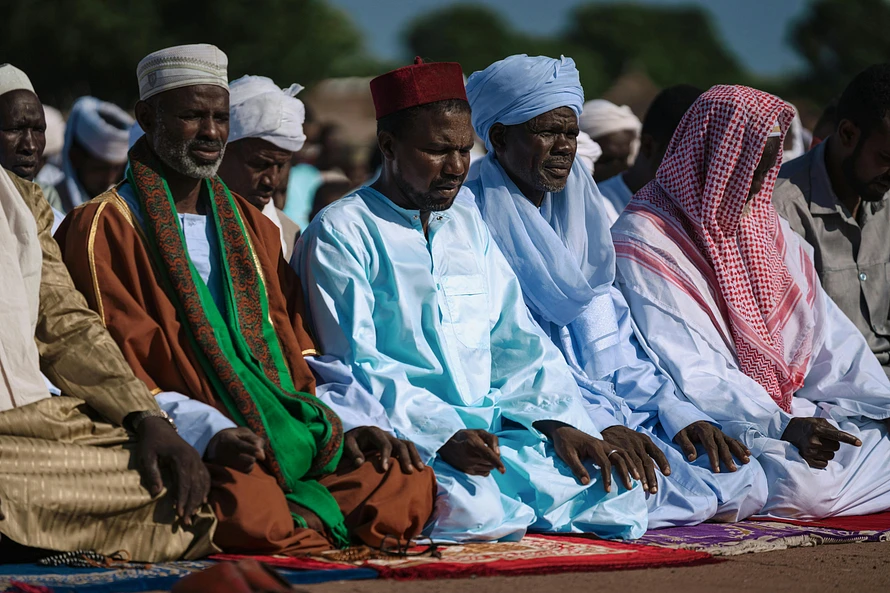Men's Islamic Clothing: The Ultimate Guide to Traditional and Modern Muslim Attire
Are you looking to understand the rich world of Islamic menswear? Whether you're a Muslim man seeking to enhance your wardrobe or simply interested in learning about Islamic fashion, this comprehensive guide will walk you through everything you need to know about men's Islamic clothing. Let's dive into this fascinating blend of tradition, faith, and style.
The Foundation of Islamic Menswear
Religious Principles Behind Muslim Men's Clothing
Islamic clothing isn't just about fashion – it's a beautiful expression of faith and identity. The fundamental principles come from the Quran and Hadith, which emphasize the importance of dressing modestly and maintaining dignity. Think of these guidelines as a framework that helps you express your faith while staying comfortable and stylish.
The Concept of Modesty
Modesty in Islamic clothing goes beyond just covering certain parts of the body. It's about carrying yourself with dignity and respect. Imagine your clothes as a reflection of your inner character – they should speak of humility and grace rather than showing off or seeking attention.
Coverage Requirements
Let's break down the basics:
- Covering from navel to knees (minimum requirement)
- Loose-fitting garments that don't reveal body shape
- Non-transparent fabrics
- Clean and well-maintained clothing
Appropriate Fit and Style
The key is finding the sweet spot between comfort and modesty:
- Avoid extremely tight or loose clothing
- Choose breathable fabrics
- Ensure ease of movement, especially for prayer
- Select appropriate colors and patterns
Traditional Islamic Garments
The Thobe (Traditional Robe)
The thobe, your go-to traditional garment, is like the Swiss Army knife of Islamic clothing – versatile, practical, and timeless. This ankle-length garment offers perfect coverage while keeping you comfortable in various weather conditions.
Regional Styles
Just like how every region has its own cuisine, they also have unique thobe styles:
- Gulf style: Crisp, clean lines with a distinctive collar
- Egyptian style: Looser fit with simpler design
- Malaysian style: Often features local patterns and motifs
- Turkish style: More structured with regional elements
Seasonal Variations
Different seasons call for different materials:
- Summer: Light cotton and linen blends
- Winter: Wool and heavier cotton options
- Spring/Fall: Medium-weight fabrics with versatile properties
The Shalwar Kameez
Popular in South Asian communities, the shalwar kameez combines comfort with style. Picture a long tunic (kameez) paired with loose trousers (shalwar) – it's like wearing comfortable pajamas that look sophisticated!
The Bisht (Ceremonial Cloak)
Think of the bisht as the tuxedo of Islamic wear. This elegant cloak, often worn over the thobe for special occasions, adds a touch of regality to your outfit.
Essential Head Coverings
Types of Caps and Turbans
The Taqiyah
This skull cap is like the foundation of Islamic headwear:
- Available in various designs
- Perfect for daily wear
- Essential for prayer
- Comfortable and lightweight
The Imamah
The turban, or imamah, carries cultural and religious significance:
- Multiple wrapping styles
- Various fabrics and colors
- Traditional and modern versions
- Regional variations
When to Wear Head Coverings
Understanding the right occasions for head coverings is crucial:
- During prayers
- Religious gatherings
- Special occasions
- Personal preference in daily life
Modern Islamic Fashion
Contemporary Interpretations
Today's Islamic fashion is evolving:
- Modern cuts and styles
- Innovative fabric technologies
- Fusion of traditional and contemporary elements
- Streetwear-inspired designs
Everyday Wear
Modern Muslim men are finding creative ways to maintain modesty in casual settings:
- Modified western wear
- Athletic-inspired modest clothing
- Casual thobes
- Modern kurtas
Professional Attire
Balancing religious requirements with professional expectations:
- Business-appropriate thobes
- Modified suits
- Professional jubbahs
- Modern modest workwear
Seasonal and Occasion-Specific Clothing
Summer Wear
Beat the heat while staying modest:
- Lightweight fabrics
- Breathable designs
- Light colors
- Moisture-wicking materials
Winter Attire
Stay warm without compromising style:
- Layered looks
- Warmer fabrics
- Traditional winter garments
- Modern modest outerwear
Special Occasion Garments
Every celebration deserves the right attire:
- Eid clothing
- Wedding wear
- Religious ceremony attire
- Formal event clothing
Conclusion
Men's Islamic clothing beautifully combines religious requirements with personal style. Whether you prefer traditional garments or modern interpretations, there's a whole world of options that allow you to express your faith while staying comfortable and fashionable. Remember, Islamic clothing is more than just fabric – it's a representation of your identity and values.
Frequently Asked Questions
- What's the minimum clothing requirement for Muslim men? The minimum requirement is to cover from the navel to the knees with loose-fitting, non-transparent clothing.
- Can Muslim men wear western clothing? Yes, as long as it meets Islamic modesty requirements and isn't too tight or revealing.
- Is it necessary to wear traditional Islamic clothing every day? No, it's not mandatory. Many Muslim men choose to wear western clothing while maintaining Islamic modesty guidelines.
- What should I wear for Friday prayers? Clean, modest clothing is essential. Many prefer traditional Islamic garments like a thobe or kurta, but any modest clothing is acceptable.
- How do I choose the right size for Islamic clothing? Look for garments that provide enough room for movement without being too baggy. The clothing should flow naturally without clinging to the body.
